Are you ready to embark on a fascinating journey into the world of fungi? Growing mushrooms at home is not only a fulfilling DIY project but also a great way to enjoy the health benefits and unique flavors of these incredible organisms. Whether you’re a beginner or an experienced gardener or forager, this comprehensive guide will provide you with all the information you need to successfully grow and cultivate your own mushrooms.
From foraging wild mushroom spores to using mushroom growing kits, we’ll cover everything you need to know to get started on your mushroom-growing adventure.
Choosing the Right Variety to Start Growing Mushrooms
Before you begin your growing mushrooms journey, it’s essential to choose the right mushroom variety for your needs. With over 14,000 varieties of mushrooms in the world, it can be overwhelming to decide which one to cultivate.
However, for beginners, oyster mushrooms are an excellent choice. Not only do they have a rich flavor, especially when sautéed, but they also grow on a variety of substrates, making them versatile and easy to cultivate. Other beginner-friendly varieties include pioppino and chestnut mushrooms, followed by intermediate-level lion’s mane and shiitake mushrooms. While varieties like maitake may be more challenging, they offer a rewarding experience for those with experience in growing mushrooms.
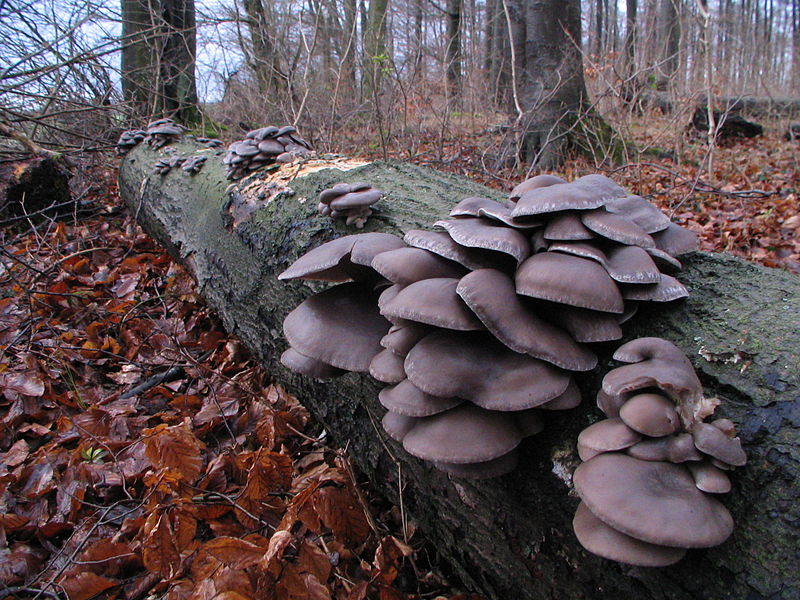
Getting Started with a Mushroom Growing Kit
If you’re new to growing mushrooms, starting with a fungi growing kit is a fantastic way to get a feel for the process. These kits come with a block of colonized substrate inside a small box, making it incredibly convenient for beginners.
You can easily find mushroom growing kits online or at local farmers’ markets. Simply slice open the box, spray it with water, and wait for the magic to happen. Most edible mushrooms prefer humid environments with plenty of oxygen and minimal direct sunlight, so placing your kit near the kitchen sink can help replicate these conditions. In drier climates, you can create a “humidity tent” by using a semi-transparent plastic bag with holes, or you can place a dish of water near the kit to increase moisture levels. Remember to allow for proper air circulation, as mushrooms require oxygen to thrive.
There’s plenty of suppliers for mushroom growing kits, one such producer can be found here
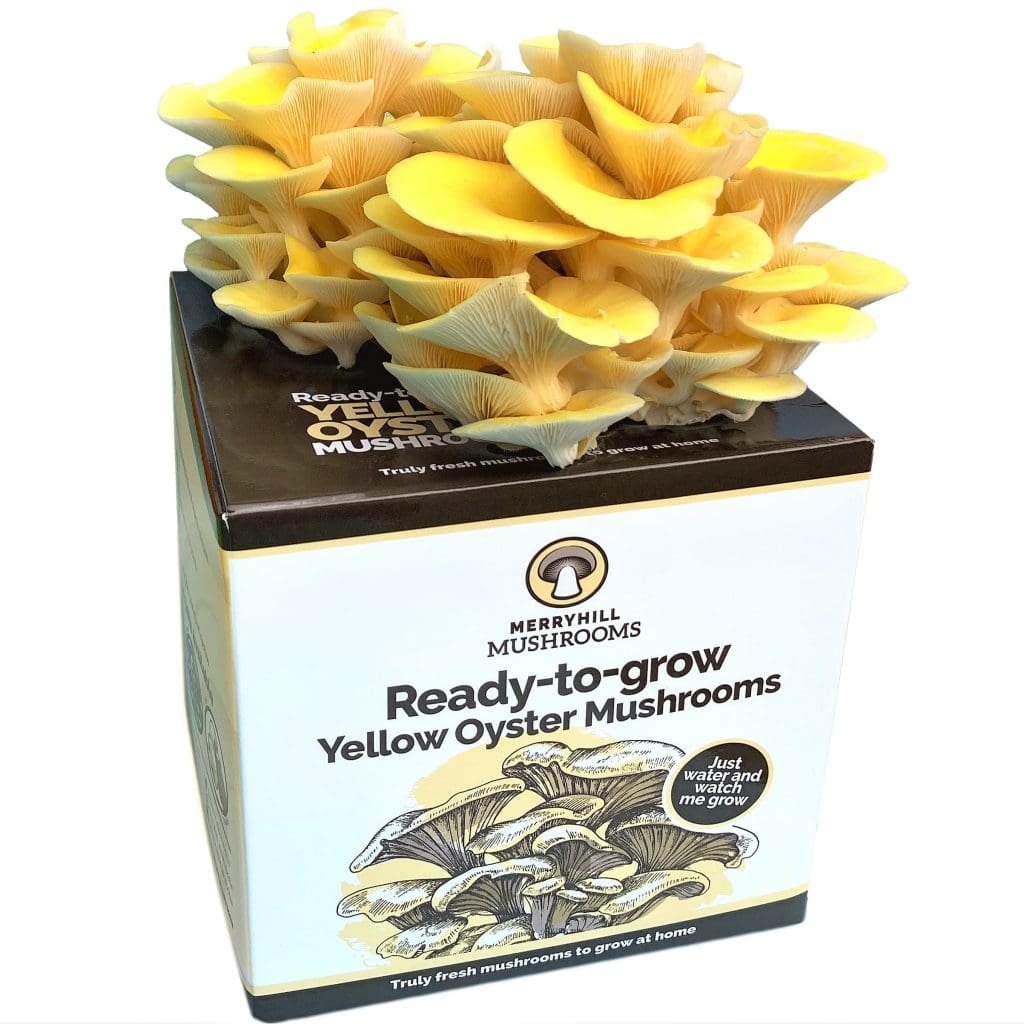
Growing Mushrooms Outdoors
If you have access to an outdoor growing space, spring is an ideal time to start cultivating mushrooms al fresco. Outdoor mushroom cultivation offers a unique experience and can yield bountiful harvests in just a few months.
Look for areas of partial shade that retain moisture, such as the base of trees or empty spaces around your vegetables. One beginner-friendly option for outdoor cultivation is the wine cap mushroom. You can purchase spawn, which is substrate inoculated with the fungus, and follow a simple process of soaking wood chips or straw, sprinkling the spawn on top, and letting nature do the rest. Logs or stumps can also be transformed into miniature mushroom farms. By using freshly cut hardwood logs, spawn, melted wax, and basic tools, you can create a long-lasting mushroom-growing environment. While this method may take longer to yield results, it can provide years of continuous growth.
Creating Your Own Mushroom Cultures and Spawn when Growing Mushrooms
For those looking to take their mushroom-growing skills to the next level, creating your own mushroom cultures and spawn is the ultimate challenge. However, it requires a sterile workplace and the ability to sterilize agar and grain.
This process involves propagating mycelium, the thread-like cells of mushrooms, on various substrates. While this method offers the most control over the growing process, it requires advanced knowledge and equipment. Beginners can skip this step and purchase ready-made spawn from reputable suppliers. Mushroom cultivation suppliers offer a wide range of spawn for different mushroom varieties, simplifying the process and ensuring a higher chance of success.

Selecting the Right Substrate
The substrate, or growing medium, plays a crucial role in the successful cultivation of mushrooms. Different mushroom varieties have specific substrate requirements, and understanding these requirements is essential for optimal growth. Common substrates used for mushroom cultivation include straw, wood chips, coffee grounds, cardboard, and sawdust. Each substrate has its own pros and cons, so it’s important to research and choose the one that best suits your chosen mushroom variety. Some mushrooms, such as oyster mushrooms, can grow on a wide range of substrates, making them versatile options for beginners.
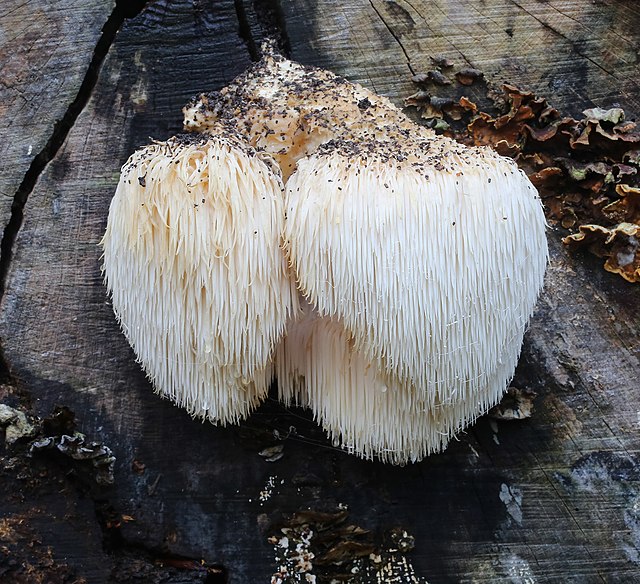
Treating the Substrate
To ensure the best conditions for mushroom growth, it’s important to treat the substrate properly. Treatment methods include pasteurization, sterilization, lime bath, peroxide bath, and “cold fermentation.” The treatment method you choose depends on the substrate and the mushroom variety you’re cultivating. Pasteurization involves heating the substrate to a specific temperature for a set period of time to kill off competing organisms while preserving beneficial ones. Sterilization, on the other hand, involves completely eliminating all microorganisms from the substrate. Lime baths and peroxide baths are alternative methods that use chemical agents to control unwanted organisms. “Cold fermentation” is a low-temperature treatment method that utilizes the natural fermentation process to create favorable conditions for mushroom growth.
Inoculating the Substrate with Spawn
Once you have treated your substrate, it’s time to inoculate it with spawn. Spawn is the mycelium of the mushroom variety you’re growing and acts as the “seed” for mushroom cultivation. You can either make your own spawn from a culture or purchase it from a mushroom cultivation supplier. Inoculating the substrate involves evenly distributing the spawn throughout the substrate material. This can be done by mixing the spawn with the substrate or layering it between substrate layers, depending on the specific mushroom variety and cultivation method you’re using. Properly distributing the spawn ensures that the mycelium can colonize the entire substrate and produce healthy mushrooms.
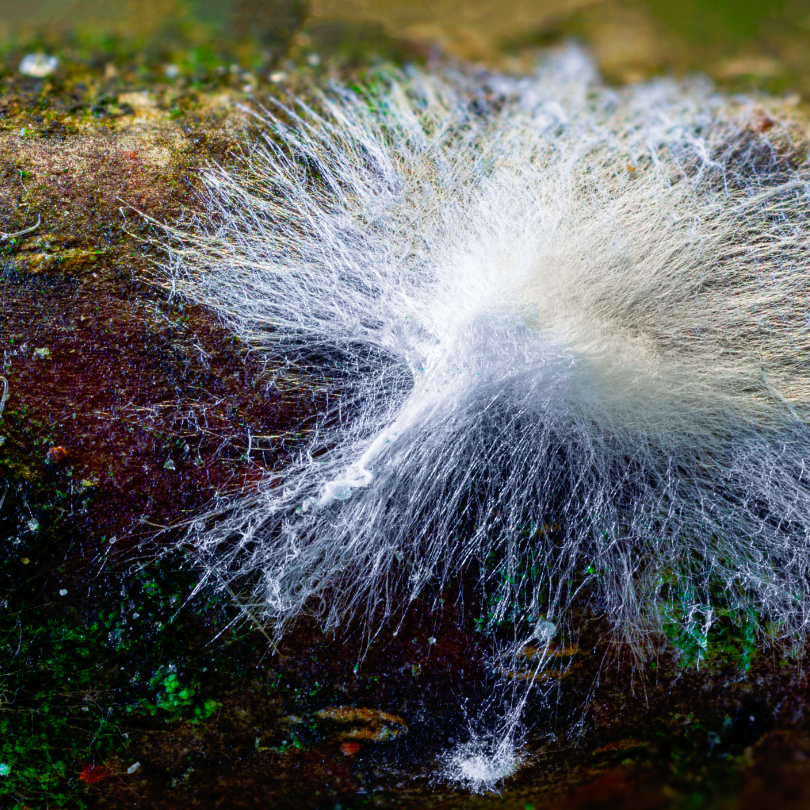
Colonizing the Substrate
After inoculating the substrate, it’s time to allow the mycelium to colonize the entire substrate—an essential stage known as the “spawn run.” During this stage, the mycelium will grow and spread throughout the substrate, breaking it down and absorbing nutrients. The time it takes for the mycelium to fully colonize the substrate depends on various factors, including the mushroom variety and environmental conditions. It’s crucial to maintain proper temperature, humidity, and air circulation during this stage to ensure optimal growth. Regularly check the substrate for signs of colonization, such as white mycelium growth, to track the progress of your mushroom cultivation project.

Promoting Fruiting and Harvesting
Once the substrate is fully colonized, it’s time to encourage fruiting—the stage where mushrooms begin to develop. To promote fruiting, you’ll need to create the ideal conditions for your chosen mushroom variety. This includes controlling temperature, light, humidity, and air circulation. Different mushroom varieties have specific requirements, so it’s important to research and understand the needs of your chosen variety.
As the mushrooms begin to form, it’s essential to harvest them at the right time. Harvesting young, firm, and healthy-looking mushrooms ensures the best flavor and texture. Avoid mushrooms that are soft, discolored, or showing signs of rot. After harvesting, continue to monitor the humidity and oxygen levels to encourage multiple flushes of mushroom growth. With proper care, you can enjoy multiple harvests from your mushroom cultivation project.
Top Tips for Successfully Growing Mushrooms
- Maintain proper cleanliness and sterility throughout the cultivation process to prevent contamination.
- Research and understand the specific requirements of your chosen mushroom variety, including temperature, humidity, light, and air circulation.
- Regularly monitor the substrate’s moisture levels and adjust as needed to ensure optimal growing conditions.
- Keep a close eye on the mushrooms’ growth progress and harvest them at the right time to maximize flavor and quality.
- Experiment with different substrates, growing methods, and mushroom varieties to expand your knowledge and experience.
- Join online communities or local mushroom foraging groups to connect with fellow enthusiasts and gain valuable insights and tips.
- Document your cultivation journey with photos and notes to track your progress and learn from each cultivation cycle.
- Have fun and enjoy the process! Mushroom cultivation is a rewarding and educational hobby that offers unique flavors and health benefits.
Top 5 Wild Mushrooms for Cultivation
- Oyster Mushrooms (Pleurotus ostreatus): Versatile and easy to cultivate, oyster mushrooms are perfect for beginners. They have a rich flavor and can grow on a variety of substrates.
- Pioppino Mushrooms (Agrocybe aegerita): Known for their nutty flavor, pioppino mushrooms are suitable for intermediate-level growers. They thrive on substrates such as wood chips and sawdust.
- Chestnut Mushrooms (Pholiota adiposa): With a distinct nutty taste, chestnut mushrooms are a popular choice for home cultivation. They do well on substrates like hardwood sawdust.
- Lion’s Mane Mushrooms (Hericium erinaceus): Lion’s mane mushrooms have a unique appearance and a flavor reminiscent of seafood. They are considered intermediate-level mushrooms to cultivate and require specific environmental conditions.
- Shiitake Mushrooms (Lentinula edodes): Known for their savory flavor, shiitake mushrooms are widely cultivated and enjoyed worldwide. While they require more advanced cultivation techniques, they offer a rewarding experience for dedicated growers.
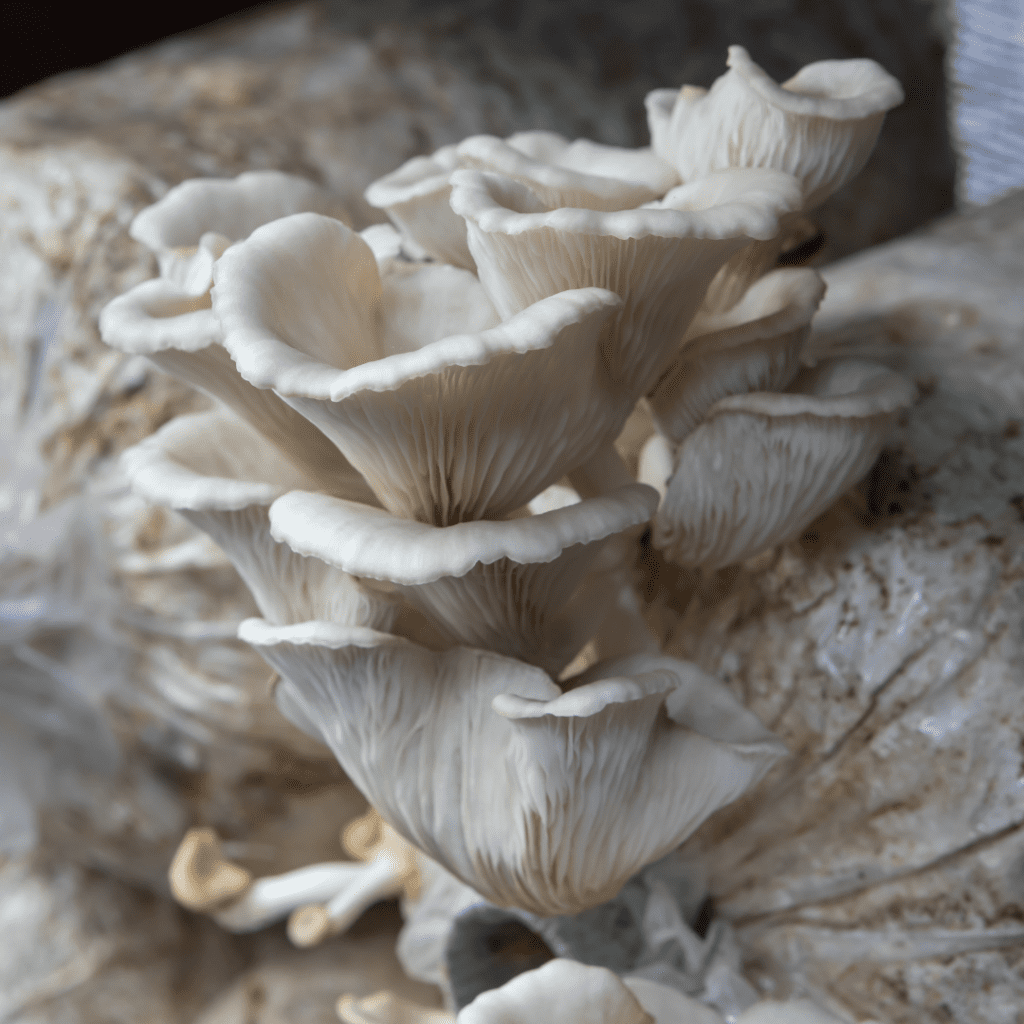
Growing mushrooms at home is a rewarding and fascinating journey that offers a unique connection to the world of fungi. Whether you’re a beginner or an experienced gardener, the joy of cultivating your own mushrooms is unparalleled.
From choosing the right mushroom variety to harvesting your bountiful crop, this guide has provided you with the knowledge and tips to embark on your mushroom-growing adventure. With a little patience, dedication, and a touch of magic, you’ll soon be enjoying the flavors and health benefits of your very own homegrown mushrooms.
So roll up your sleeves, put on your gardening gloves, and let the mushroom-growing fun begin!





